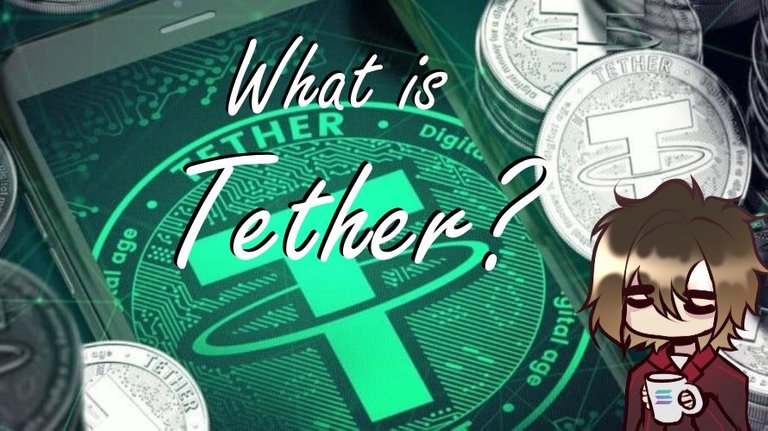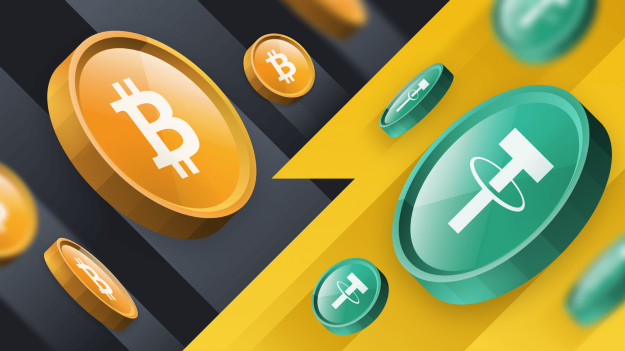What a trader needs when taking profits before getting back in is some form of value storage that won't be affected by market swings. One that can withstand the bulls, the bears and the dips. The largest coin/token to do so today is Tether, which keeps it value pegged on a 1:1 basis to the US dollar by backed real-world money. How does it work and is it safe to use? Let's find out.

Background
This is one of the older coins, being released in 2014 with the original name Realcoin, this was later changed to Tether (USDT). This coin was mainly used to buy bitcoin, the BTC/USDT pair was responsible for almost 54% of all bitcoin trades for several years until 2019. In 2019 the Tether got released onto the Ethereum blockchain with a ERC-20 smart contract having the same peg and being the same coin, not wrapped. In that year, the transactions on the ERC-20 based Tether more than doubled the native token which is built on the Omni protocol tied to bitcoin. The crypto world took notice and the number of Tether coins on the Omni protocol is a far cry from what it used to be, most of them are ERC-20 today. It also exists on: OMG network, EOS, TRON, ALGO, SOL and BSC.
When Black Thursday hit on the 12th of march 2021, Tether overtook the stablecoin marketcap now holding more than 50% of the total marketcap for all stablecoins.
Network
The coin is non-mineable with no consensus method, meaning there's no decentralized network to verify block transactions. The coin is instead controlled by a central admin, that being Bitfinex, that oversees the minting and transactions. This means that the coin can't suffer any 51% attack, making it more secure. However having one single entity controlling total supply makes it an extremely centralized coin so users beware. On networks with smart contracts implemented there is one layer of security with that the underlying blockchain can stop any abuse that would affect the blockchain itself.

The Bitfinex company mints and controls all the coins, releasing the coin onto the different blockchains at regular intervals. There is a claim that all Tether is backed by their USD equivalent in real world money held by Bitfinex. However unlike other stablecoins such as MakerDAO they haven't been transparent about the pegged backing. This has caused a stir of uncertainty lately as a stablecoin without a proper method of keeping its peg losses its value, it'll be no different than any other crypto. To this date, Bitfinex hasn't had any independent 3rd party verify their claim.
One case of security with the token/coins is that it's a hard coin to perform any scams and rug pulls with (unless you're Bitfinex). There have been cases in the past where hackers have stolen millions of USDT and Bitfinex simply froze their wallet addresses from transferring or trading any Tether, effectively burning all the coins at their address. This can also help users get their lost funds back or get refunds easier as opposed to other blockchains.

Use cases
Main use case for the coin is still the trade of major crypto. In the past the BTC/USDT, ETH/USDT & BNB/USDT trading pairs have been responsible for over 50% of each respective crypto's trade volume. There are also a great deal of earn or pseudo-staking programs with USDT which allows users to have a more effective saving program as opposed to normal banks. Most of these range from 10-12% APY and in some cases even climb up to 20%.
Tether today
The air surrounding the coin is very unstable as the transperency and centralization issues haven't been addressed at all. The coin is also supposedly directly able to control the market price by minting and releasing new coins. Bitcoin prices have always jumped up in the past when there was a new round of USDT coins minted. One extreme case was in 2019 when Bitfinex released 50 billion coins but later burned them all as an employee accidently input the decimal in the wrong place. It's a widely used coin that can help you trade effectively in the crypto world, but do take care using it.
I generally don't give too much of my own thoughts like this but this coin has alot of issues that can cause new/uninformed users a great deal of pain down the line. If you are planning on using a stablecoin, go for USDC or DAI as they are more trustworthy and do have their peg verified.
Pros:
- Stable price
- Wildly used
Cons:
- Fully centralized
- Not fully verified & has been hacked before